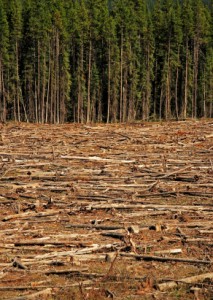 By Carleigh Dunn and Tina Kostera – March 15, 2012
By Carleigh Dunn and Tina Kostera – March 15, 2012
At the UN climate change talks in Montreal in 2005, the governments of Papua New Guinea and Costa Rica introduced an initiative to Reduce Emissions from Deforestation and Forest Degradation (REDD). (1)
The UN-REDD Program is “the United Nations Collaborative initiative on Reducing Emissions from Deforestation and forest Degradation (REDD) in developing countries.” The program was launched in September 2008, in order to help developing countries implement the national REDD+ strategies.
What is REDD?
The purpose of REDD is “to create an incentive for developing countries to protect, better manage and wisely use their forest resources, contributing to the global fight against climate change” (2).
Financial value is created from the carbon stored in the trees. Once quantified, REDD has developed countries pay developing countries carbon offsets for their forests.
This allows for the sustainable management of forests in developing countries. This benefits those countries as well as local communities and biodiversity of that forest. Of course, it also helps in the fight against climate change by reducing greenhouse gas emissions.
What are carbon offsets?
Carbon offsets are simply defined as credits for reductions in greenhouse gases that one party has achieved which can be purchased and used to offset or compensate the emissions of the purchasing party (3).
The reason many companies or parties choose to purchase these offsets is due to the fact that reducing their own emissions may be more expensive than the latter.
For more information visit the Carbon offsets area of our website.
Pros and Cons of REDD:
Here are some points in favour of REDD (Pros) and some points against it (Cons)
Pros:
- Mitigation of climate change
- The protection and increasing of biodiversity and watersheds
- REDD+ is dependent upon local communities and provides sustainable livelihoods for the people who are forest dependent, also creating social benefits (4)
- Past communities that were neglected may gain a voice in the political process in regards to REDD+ (4)
Cons:
- There is no international definition of what a forest is or what sustainable forest management is.
- Diverse legal systems govern the world’s forests and in many countries ownership is not always clear. Often, “clarifying the rights of users is not a solution, as those who own the forests might not protect those living within them” (4);
- Corruption and carbon fraud have begun – Only Brazil and Costa Rica have strong governance institutions out of 10 of the largest tropical forest countries, with the capacity to set up REDD+ (4).
- It is not clear how REDD+ should be financed (4).
- Many believe that REDD+ will become more expensive than it was originally estimated and costs will fluctuate depending on different variables
- Proper management of REDD+ may be difficult and needs to be monitored carefully.




